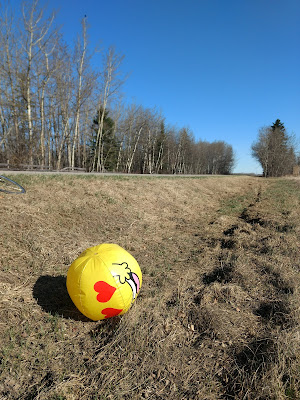Sunday, June 2, 2024
A day of classic Alberta gravel riding in Smoky Lake County
that kicks off with a bugle blast, includes a short stretch on the gruelling
Iron Horse Trail and a longer one on the scenic, historic Victoria Trail.
Oh, and dust. We all go home with dust.
No registration fee. All are welcome: gravel lovers, the
gravel-curious, and anyone up for a dusty adventure.
We have two route options:
The Bugle (100 km)
(https://ridewithgps.com/routes/43071514)
The Buglette (50 km)
(https://ridewithgps.com/routes/43071763)
Roll out at 9 am.
Park at the small lot beside the flag poles, one kilometre
east of Metis Crossing campground. There's a rustic toilet there (the kind that
will do the trick in a pinch but isn't a place you'd want to linger). There's
no water; bring yer own.
If you want to make a weekend of it, there's a campground
and a fancy lodge at Metis Crossing right next door.
A few things to know:
This is not a race, though some participants will ride it
fast. We usually end up with some fast, medium, and slow groups. Or you can
ride alone, if that’s your jam. If you like to stop and read plaques or take
photos, you’ll love this.
But know that this is NOT a no-drop ride; in fact, people
will almost certainly be dropped, some might get lost, and others will get
half-way through, wonder why they ever agreed to try this, and seek a short-cut
back to the parking lot.
RIDERS MUST BE COMPLETELY SELF-SUPPORTED.
No real prizes will be awarded, though we tend to give out a
Petro Can Surprise Bag to the Dustiest Rider. Riders will be given a GPX file
and, if you want it, an old-school cue sheet--that's all.
There is a gas-station store at Waskatenau at about the
60-km mark of the 100-km route. It's got a surprisingly tasty selection of
baked goods. That's the only supply point. Most riders stop there for a break.
Heed the bugle!






.jpg)


